Structure and Principle
In the cold cathode fluorescent lamp, the inner wall of a glass envelope is coated by phosphor and electrodes are attached to both ends of the lamp. Mixed rare gases and a trace of mercury are contained in the envelope.
When high voltage is applied across the electrodes, discharge starts and mercury is excited by collision with electrons and gas atoms then radiates ultraviolet rays (chiefly 253.7nm wavelength). Phosphor is excited by the ultraviolet rays to produce visible light. Mixing ratios of phosphors provide various colors of light (Color Temperature) to meet requirements for applications.

Lamp Characteristics
Ambient Temperature & Brightness
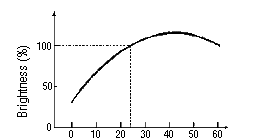
Ambient Temperature (°C)
The drop of brightness at low temperatures is due to a drop of UV output, caused by reduction of vapor pressure of mercury. The drop at high temperatures, on the other hand, is due to a decline of luminous efficiency from absorption of UV resulting from a rise of vapor pressure. Optimum lamp operation is obtained by to establishing lamp current based on lamp diameter to optimize bulb wall temperature.
Ambient Temperature & Brightness Rise
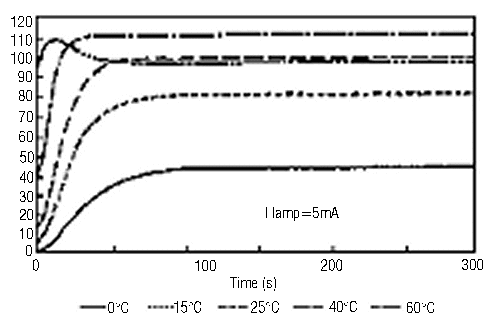
Since the cold cathode fluorescent lamp generates little heat, brightness is low immediately after starting due to low vapor pressure. It gradually becomes brighter as lamp temperature rises. Saturation temperature stabilizes in proportion to lamp current and ambient temperature.
Ambient Temperature & Starting Voltage
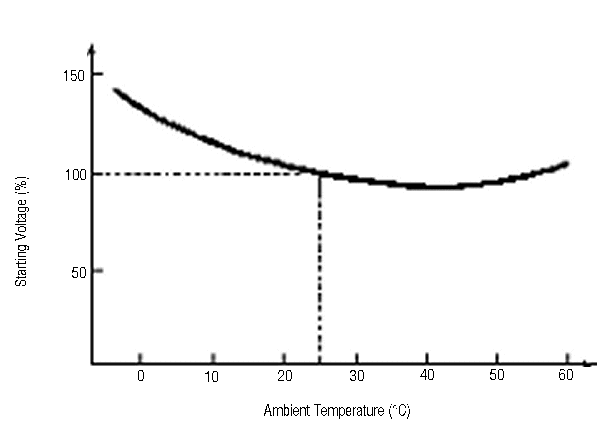
At low ambient temperatures, starting voltage is higher than starting voltage at low temperature. At low ambient temperature, mercury vapor pressure drops and the arc striking effect is weakened, resulting in a higher starting voltage.
Lamp Current & Brightness
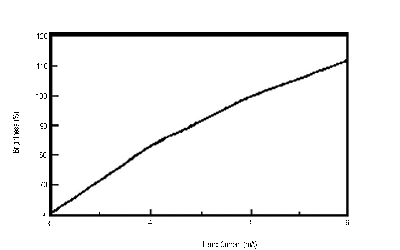
Brightness varies with lamp current. But too low lamp current causes unstable discharge (flicker) and too high lamp current causes short life.
Brightness Maintenance
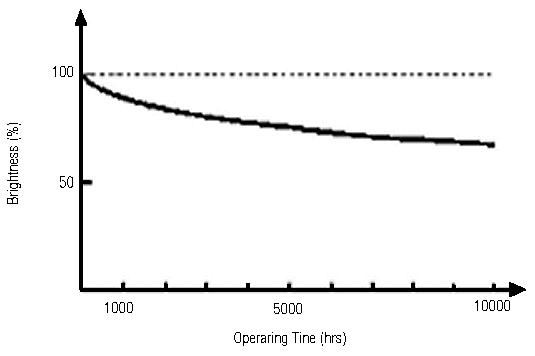
Brightness gradually decreases with lamp operating time. The decline is caused by deterioration of phosphors and lowering of transmission of the glass envelope. Continuous operation at low temperature or at high lamp current causes consumption of mercury through blackening, which reduces brightness.
EDL Displays employs an automatic temperature stabilization system on monitors intended for use at low temperatures and/or at low brightness settings. This system significantly reduces lamp degradation under these conditions, as well as speeding initial brightness stabilization.
Spectral Distribution
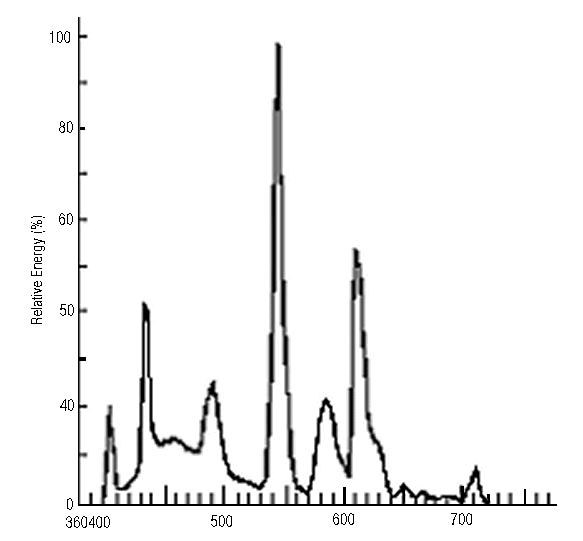
The mixture of high efficiency rare earth phosphors which emit blue, green and red color lights provide white light with high brightness and good color rendering.
